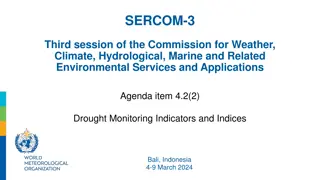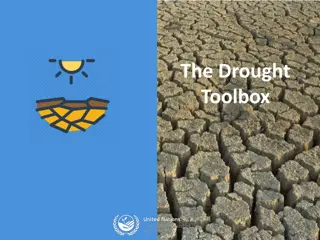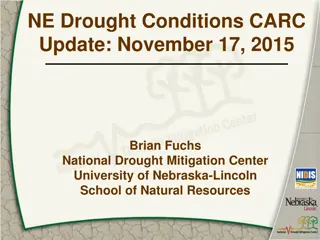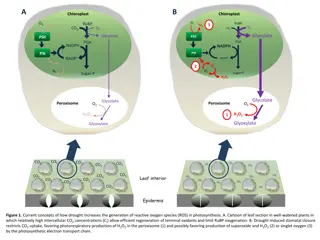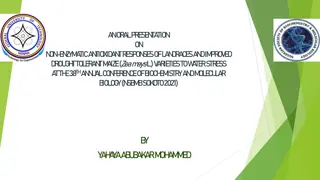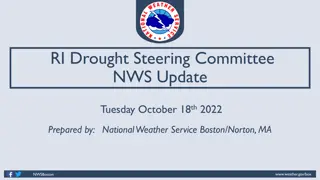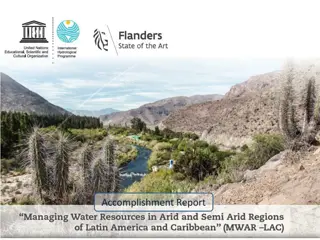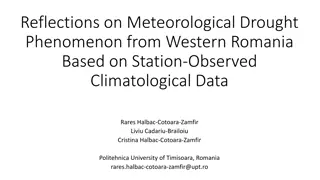
Emergency Management Reports and Requirements in California
Explore the legal requirements for after-action reports in California's emergency management system, including reporting statutes and regulations. Learn why these reports are necessary, who is responsible for completing them, and what information they should contain to enhance disaster response and recovery efforts.
Download Presentation

Please find below an Image/Link to download the presentation.
The content on the website is provided AS IS for your information and personal use only. It may not be sold, licensed, or shared on other websites without obtaining consent from the author. If you encounter any issues during the download, it is possible that the publisher has removed the file from their server.
You are allowed to download the files provided on this website for personal or commercial use, subject to the condition that they are used lawfully. All files are the property of their respective owners.
The content on the website is provided AS IS for your information and personal use only. It may not be sold, licensed, or shared on other websites without obtaining consent from the author.
E N D
Presentation Transcript
State of CA After Action Reports Emergency Management Systems Unit-Cal OES After Action Report Purpose~ California Standardized Emergency Management System CA Drought Report Scope Impressions for lessons learned and improvements 2
Why do an After Action Report? It s the law! 3
WHY AAR: STATUTES California Emergency Services Act, Government Code 8607 (f): After Action Reporting Requirements for Cal OES California Code of Regulations, Title 19, 2450 a & b: Reporting Requirements for Local Government and State Agencies California Code of Regulations, Title 19, 2900: Defines the Incident Period 4
WHY AAR: CA Emergency Services Act GC 8607 (f) Reporting Cal OES Reporting Requirements The Office of Emergency Services shall, in cooperation with involved state and local agencies, complete an after- action report within 120 days after each declared disaster. This report shall review public safety response and disaster recovery activities and shall be made available to all interested public safety and emergency management organizations 5
WHY AAR: California Code of Regulations (CCR), Title 19, 2450 b Reporting Requirements (b) The after action report shall, at a minimum, be a review of response actions taken, application of SEMS, suggested modifications to SEMS, necessary modifications to plans and procedures, identified training needs, and recovery activities to date 6
California Code of Regulations, Title 19, 2450 a Reporting Requirements (a) Any city, city and county, or county declaring a local emergency for which the governor proclaims a state of emergency, and any state agency responding to that emergency shall complete and transmit an after action report to Cal OES within ninety (90) days of the CLOSE OF THE INCIDENT PERIOD 7
California Code of Regulations, Title 19, 2900 Incident Period Incident Period means the time interval during which the disaster-causing incident occurs No state assistance under the Act shall be approved unless the damage or hardship resulted from the disaster-causing incident which took place during the incident period or was in anticipation of the incident The incident period is determined by the director 8
WHAT WE NEED- CA Drought Due on 11/1/2017 Local Government: If you declared a local emergency and the Governor also proclaimed a State of Emergency, complete an AAR. No need to wait for Cal OES to ask for your report. State Agencies: Same timeline. 9
STATE OF EMERGENCY PROCLAMATIONS FOR WHICH AN AAR WAS CREATED 1993 TO 2015 10
WHERE CAN I GET THE AAR SURVEY and WHERE DOES IT GO? You can download the state and local AAR surveys from the Cal OES website at: www.caloes.ca.gov/cal-oes- divisions/planning-preparedness/after- action-corrective-action-reporting Please forward completed reports to Cal OES to: SharedMail.CalAAR@CalOES.ca.gov 11
REPORTING REQUIREMENTS (for local government and state agencies) The after action report shall, at a minimum: Be a review of response actions taken Application of SEMS Suggested modifications to SEMS Necessary modifications to plans and procedures Identify training needs Recovery activities to date 12
Review of Response Actions Taken Response actions are important pieces of information to include in an AAR. Reviewing response actions: Memorializes the response for future reference Helps to identify lessons learned Helps to discover actions that may help yours or other jurisdictions in future responses Identifies potential gaps in resources and capabilities 13
Application of SEMS Reviewing the application of SEMS helps ensure your jurisdiction is properly applying all the precepts of SEMS and where to make adjustments if not. 14
Suggested Modifications to SEMS A quality AAR may identify needed modifications to SEMS. This will help to make the system better for everyone who uses SEMS. 15
Necessary Modifications to Plans and Procedures During a disaster response or an exercise, it is imperative that jurisdictions evaluate the efficacy of their plans and procedures and make changes when necessary. This action is an integral part of the preparedness and exercise planning cycle. Each entity should have a continuous improvement process. 16
Identify Training Needs With the push towards credentialing, identifying training needs is becoming more important than ever. Moreover, the success of field and EOC activities during a response is dependent on the quality and quantity of training each person receives prior to deployment. 17
Recovery Activities to Date Documenting recovery activities that occur within the incident period serve to: Identify any needed changes in the IDE and/or PDA process Identify any issues in the coordination of opening LACs or other individual assistance centers Determine the level of knowledge of the recovery process local officials possess 18
SUMMARY-AAR PURPOSE/SCOPE The after-action process is the capstone activity to all the effort we put into planning, organizing, equipping, training, exercising, and responding. The process helps us to develop a roadmap for improvement. The process: Identifies gaps in training Identifies gaps in our plans and procedures Identifies resource shortfalls Identifies capability shortfalls Becomes an invaluable reference for future disaster response 19
California Drought AAR CA Drought story due from stakeholders on 11/1/17 Drought Task Force Executive Orders Historic Drought leading to historic rainfall Unique collaboration with entities that normally do not engage in emergency management Unique problems with water (too much or too little) The water culture, sectors, relationships, laws, needs Connections to other hazards-fires, subsidence- infrastructure Planning-lessons learned and then it rained 20
Cynthia.shipley@caloes.ca.gov (916) 845-8753 Jim.Brown@caloes.ca.gov Peg.Taylor@caloes.ca.gov Scott.Marotte@caloes.ca.gov (916) 845-8780 EMSU Manager (until 11/17/17) Division Chief Drought RA Staff Lead AAR Sr ESC 21




